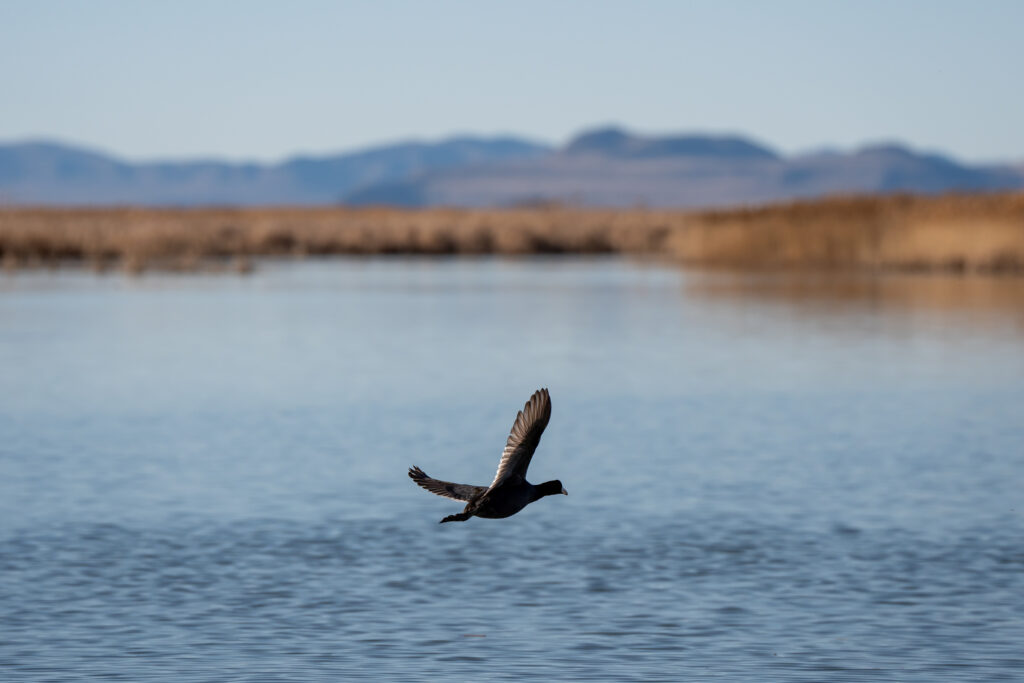A bird flies in the Willard Bay portion of the Great Salt Lake on Monday, March 18, 2024. (Photo by Spenser Heaps for Utah News Dispatch)
There are still 24 reservoirs, ponds and lakes in Utah that could have harmful algal blooms, which pose some unique threats to hunters gearing up for the start of waterfowl season.
Most waterfowl hunts in northern Utah are underway as of this past weekend — by next Saturday, waterfowl hunts in southern Utah will open up and hunters across the state will be looking to harvest geese and ducks.
But the possible presence of toxic algal blooms in some of the state’s water bodies mean hunters should use caution when out of the water, especially if they’re out with a dog.
Harmful algal blooms are pictured in northern Utah on Oct. 30, 2023. (Photo courtesy of Utah Division of Wildlife Resources)
Just Mantua Reservoir in eastern Box Elder County has a “danger” advisory, which the Utah Division of Water Quality defines as having a large algal bloom with high levels of dangerous toxins. There, the division has shut down the reservoir to boating, swimming and water skiing, while urging the public to keep animals away.
A handful of other water bodies in Utah are under a “warning” advisory — that includes the Willard Peak pond near the Great Salt Lake’s Willard Bay, Pineview Reservoir, Utah Lake and Deer Creek Reservoir. This means the division determined “either waterborne pathogens or a harmful algal bloom is present,” and recommends against swimming and water skiing.
Some of the state’s water bodies — including Rockport Reservoir, Yuba Lake and parts of the Virgin River near Zion National Park — are also under a “health watch,” which points to evidence that waterborne pathogens or algal blooms are developing. The division also recommends against swimming in these conditions.
A full list of water bodies impacted by algal blooms can be found at the Utah Division of Water Quality’s website.
Algal blooms are most common during the summer months, worsened by hot temperatures. By Oct. 31, as temperatures cool, the division stops its monitoring, but algae can persist through the fall and into the winter.
Algal blooms can cause a visible, blue-green discoloration, making the water look like pea soup, spilled paint, or grass clippings.
Toxins found in the blooms can cause liver, nerve and skin issues — for dogs, exposure to the blooms can be fatal, even if they simply walk in contaminated water. Eating the algae, swallowing water, or licking water off their fur are also common ways dogs can be impacted.
Any animal exposed to a harmful algal bloom should be taken to a veterinarian immediately.
“Even with proper veterinary care, most exposures are fatal. Prevention is the best way to protect your pet,” the Utah Division of Wildlife said in a news release.
GET THE MORNING HEADLINES.

